By: Gautam Sharma (international correspondent)
ITALY – I was mildly sceptical (and I’m probably not alone here) of the Lamborghini Huracan Performante’s claimed 6 min 52,01 sec lap of the Nurburgring Nordschleife when it was announced. Scroll to the bottom of this post to watch that incredible lap.
Quicker than it should be?
I simply couldn’t work out how a 470 kW coupe that weighs around 1,5 tons could blast around the arduous 20,8 km circuit a massive five seconds quicker than the devastatingly quick Porsche 918 Spyder. It seemingly didn’t add up.
But, after a day spent exploring the Performante’s breadth of capabilities at the dauntingly fast and undulating 4,959 km Imola circuit and across some dubiously surfaced Italian B-roads, it all begins to make a bit more sense.
Point-to-point
The Huracan’s point-to-point pace isn’t about brute force. It’s more about the supreme cohesiveness of the whole package, enabling it to carry an extraordinary amount of speed into, through and out of corners.
It’s not too shabby on the straights either, as reflected by a 0-100 km/h sprint of 2,9 sec, 0-200 km/h in 8,9 sec and top whack of 325 km/h.
Active aero
The raw stats mightn’t be ground-breaking in today’s context, but every element of the Performante has been honed to the nth degree, and party trick is the pioneering ALA (Aerodinamica Lamborghini Attiva) active aerodynamics system that Lamborghini has promptly patented.
More on this later, but the gist of this tech is that it provides high downforce under braking and cornering, yet low levels of speed-sapping drag on the straights. However, the real clever bit is its asymmetric ‘Aero Vectoring’ capability, which is similar to a torque-vectoring system to help get the car turned in to corners.
F1 inspired
Chatting with Lamborghini R&D boss, Mauricio Reggiani, reveals the tech was proposed to him by a couple of ex-Toro Rosso Formula One engineers now in the employ of Lambo. Preliminary tests in the wind tunnel proved the system had merit. Further development got the concept to a production-ready stage, and the Performante is the first car to utilise it.
The Huracan flagship’s emphatic Nurburgring benchmark is part of recently installed CEO Stefano Domenicali’s desire to stamp the brand’s identity as it embarks upon a major growth initiative that includes the crucial new Urus SUV.
Still naturally aspirated
Predictably, one of the Performante’s key upgrades is a subtle massaging of that musical, rev-happy V10, which gains lightweight titanium valves and a low-backpressure exhaust system comprising two fat drainpipes. There’s visual differentiation within the engine bay, too, courtesy of bronze cam covers.
More power
These tweaks liberate an extra 22 kW and 40 N.m over the LP610-4 for max outputs of 470 kW at 8 000 r/min and 600 N.m at 6 500 r/min. The free-spinning V10 is hooked up to the same seven-speed dual-clutch gearbox as the regular Huracan, which is recalibrated for faster response.
Better suspension
Both springs and anti-roll bars have been beefed up, which means the Performante’s suspension is 10 per cent firmer vertically, while roll stiffness is boosted by 15 per cent. It also gains stiffer (by 50 per cent) bushings to further sharpen lateral control.
Weight watching
Complementing the engine and chassis upgrades is a weight-shedding regime, as part of which the Performante gains ‘Forged Composite’ (chopped carbon fibres in a resin) elements that include the front and rear spoiler, engine cover, rear bumper and diffuser, resulting in it tipping the scales 40 kg lighter than the standard Huracan LP610-4.
How does it go?
In a word, brilliantly. For those who have never been there (and I’m guessing this will be the case for most readers), Imola is a proper, hairy, old-school racetrack.
It’s unfortunately remembered primarily as the place where Ayrton Senna and Roland Ratzenberger lost their lives during the fateful 1994 San Marino Grand Prix, but this shouldn’t detract from the fact that it’s an incredible piece of tarmac, with pronounced elevation changes and fast, ballsy corners such as the downhill Tamburello and Piratella, where you basically take a deep breath and keep your foot flat.
Aural assault
Firing out of pitlane, my eardrums are assaulted by a louder, harder-edged vocal signature. Throttle response is sharper, too, and, in terms of raw straight-line urge, it feels similar to its V12-powered Aventador S big brother. The 0-200 km/h stats bear this out, as the latter is only a tenth quicker to this mark.
Everything about the Performante feels razor-edged. Where the Huracan LP610-4 was notable for having softened up somewhat compared to its Gallardo predecessor, the Performante seems ultra-focused in much the same way that the first Gallardo Superleggera was.
Quick and composed
Of course, part of the Performante’s exceptional composure is down to its firmer suspension, but there’s no doubt the active-aero system plays a role here.
Unlike a conventional active aero set-up, whereby the whole wing changes its angle of attack, the ALA system uses front and rear ducts within which sit electrically actuated flaps that open and close to either ‘stall’ (cancel out) the front spoiler and rear wing, or enable them to generate full downforce; a massive 750 per cent more than a standard Huracan.
More aero grip
In addition, the rear wing’s inner air channel is split right and left, allowing ‘aero vectoring’ for high speed cornering. Depending on the direction of the turn, the ALA system activates either the right or left side of the spoiler, increasing downforce and traction on the inner wheel, which counteracts the load transfer under heavy cornering.
As alluded to earlier, it’s a bit like torque-vectoring, which means you need to apply less steering angle, and the car also remains more stable, which is particularly confidence-inspiring at a high-speed track like Imola.
Track attack
What it all adds up to is arguably the most track-capable road car currently on offer. The Peformante is electrifying in its hair-trigger responses, yet never seems intimidating in the way the first Aventador and the Murcielago were.
It’s forgiving and adjustable, so even if you dive into a corner too hot or are excessively violent with your steering or throttle inputs, it allows you to recover without having any white-knuckle moments or losing much in terms of forward momentum.
Smooth electronics
The electronic safety net is non-intrusive in its intervention (especially in Sport and Corsa modes), so the Performante is a terrifically enjoyable car on track, especially with that V10 singing at 8 000 r/min.
In fact, the engine spins up to its redline so effortlessly that it’s not too difficult to inadvertently bounce off the rev limiter while your attention is focused ahead.
No one-trick pony
But perhaps the Performante’s biggest victory is that it’s not a one-trick pony that pummels you into a pulp in real-world conditions. Proof of this is provided on a road route that includes some remarkably poor sections of tarmac – lumpy in parts, and sharply corrugated in others.
Well-behaved
On the whole, the Lambo copes surprisingly well. Ride quality is composed even in Sport mode, and the only the sharpest of corrugations cause any level of discomfort. The Performante is a realistic everyday car, even though most prospective owners are likely to have at least one or two other vehicles in their garage for daily-driver duties.
Striking looks
There’s no chance onlookers will mistake your Performante for a lesser Huracan – the in-yer-face rear wing sees to that but, just for good measure, there’s also that elaborately sculpted rear diffuser, with its matt-black and gloss Forged Composite elements, plus those two massive exhaust pipes.
It’s no shrinking violet, and this means its visuals will appeal to some buyers, but not necessarily all. Personally, I prefer the aesthetic purity of the unmolested Huracan. But you can each make up your own minds.
Summary
As an overall package, the Performante is a hugely tempting proposition for those who can afford it. It is much faster and more rewarding to drive it is than the car it’s derived from. A colleague summed it up best: “It’s the car the Huracan should have been all along”. Better late than never. Bravo, Lamborghini.
Price: n/a
Engine: 5,2-litre V10
Transmission: Seven-speed dual-clutch auto, all-wheel drive
Power: 470 kW
Torque: 600 N.m
Top speed: 325 km/h
0-100/200 km/h: 2,9/8,9 sec
Fuel consumption: 13,7L/100km

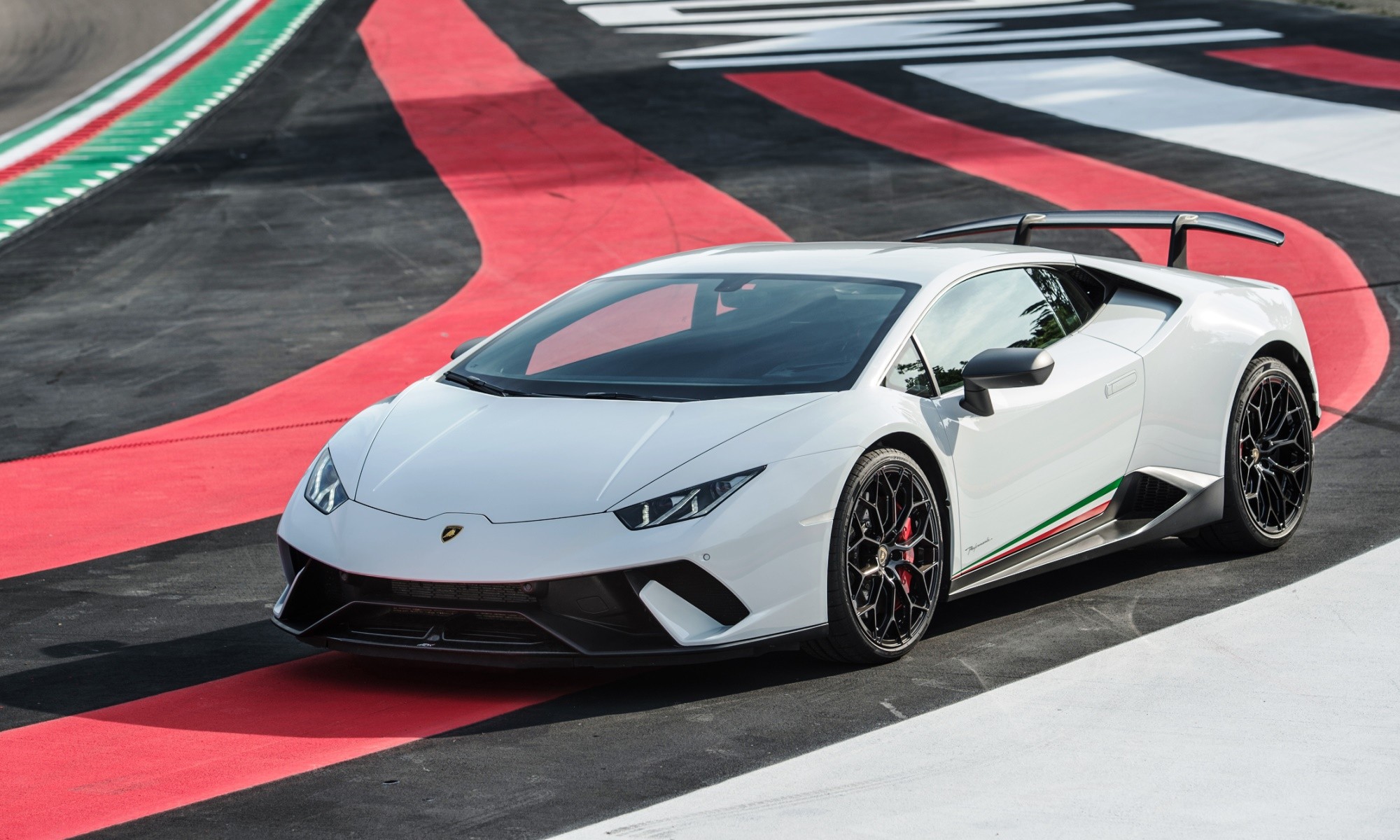
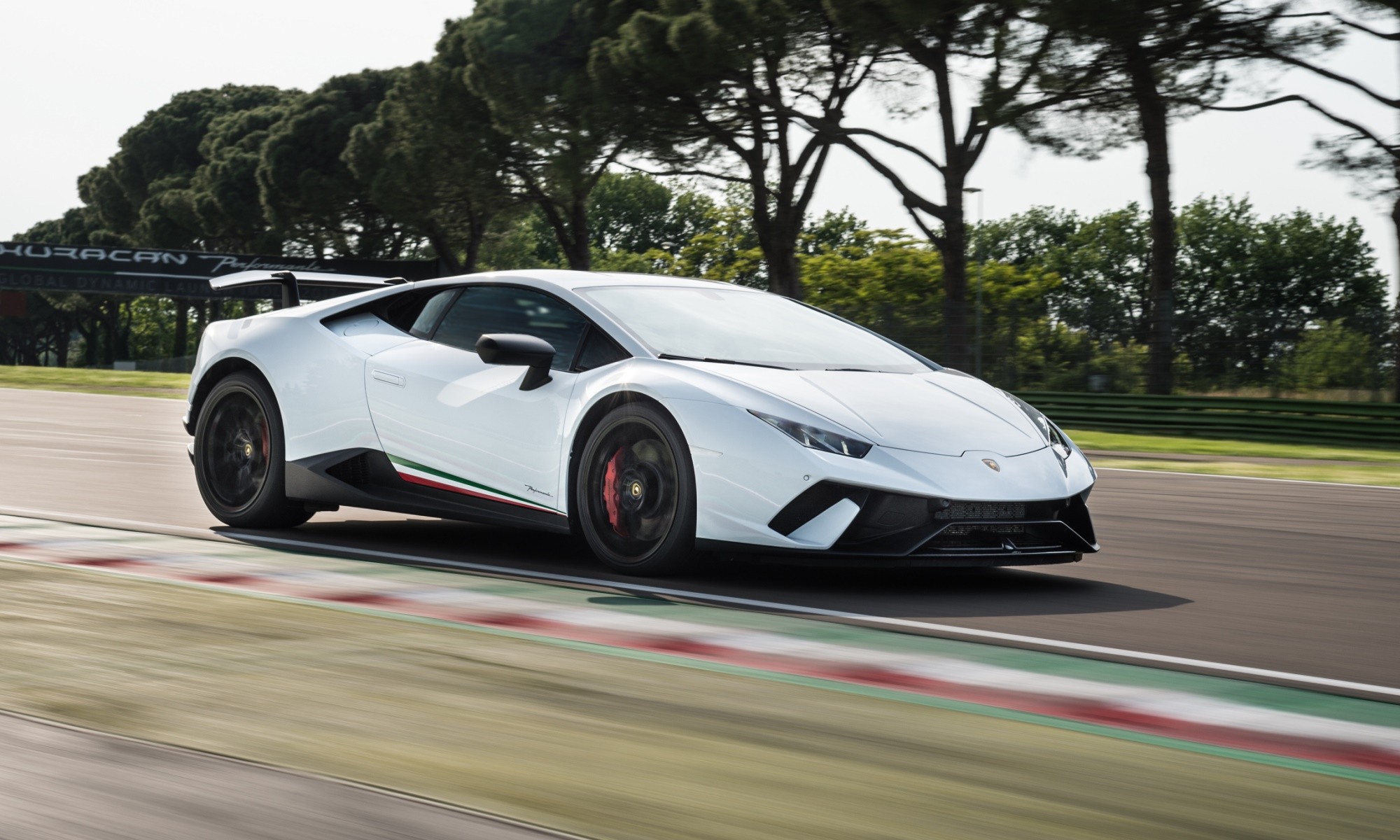
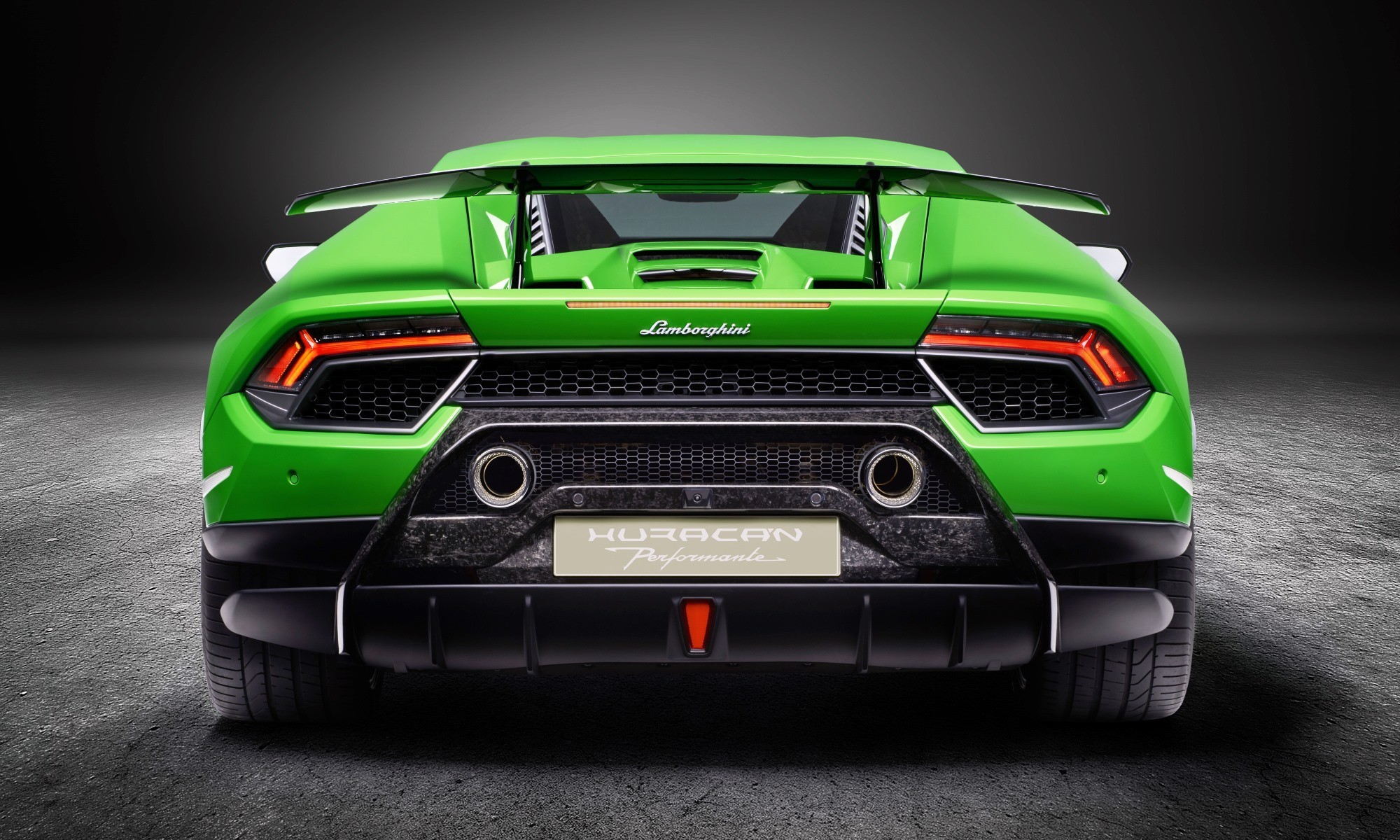
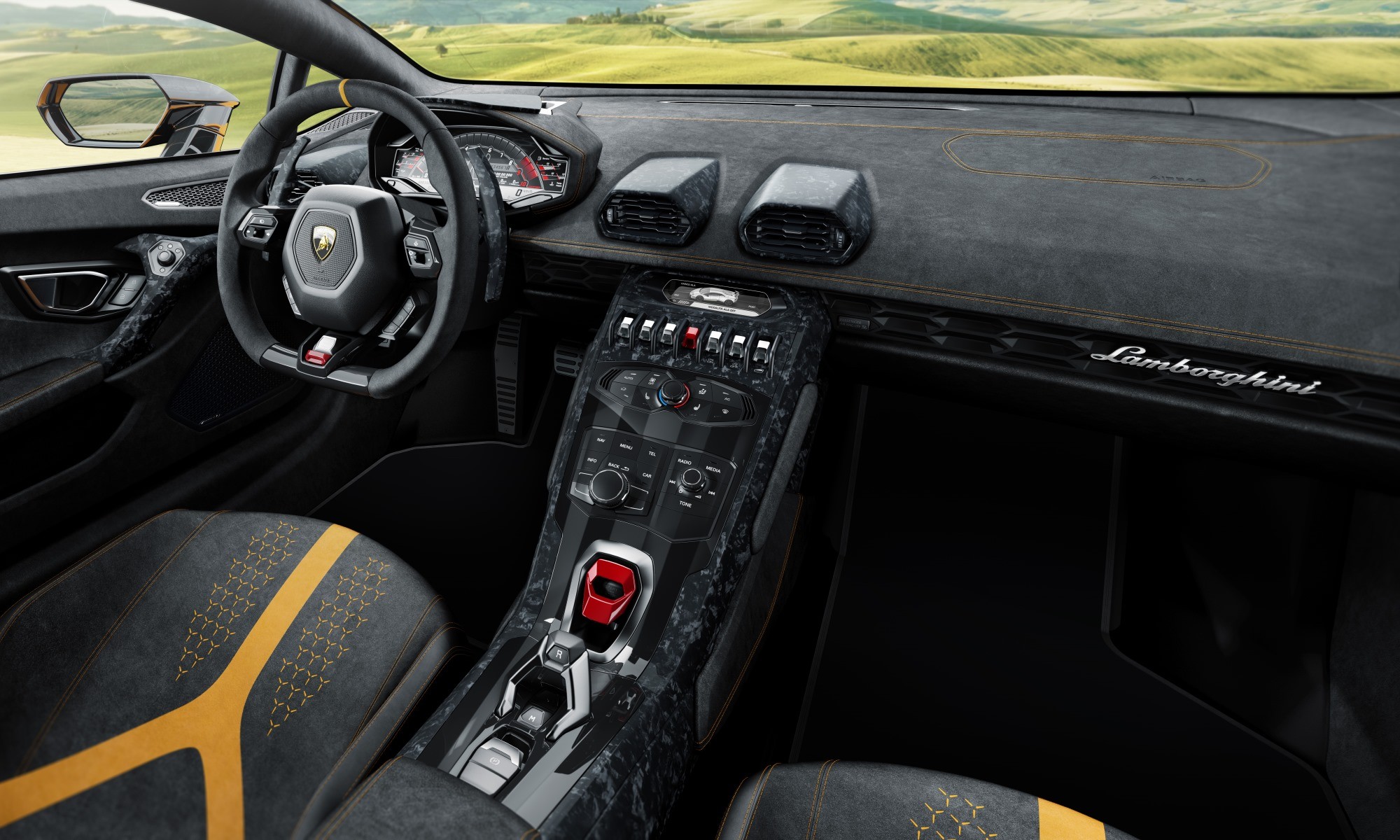




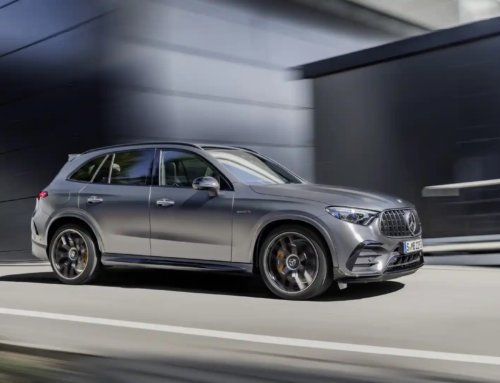
Leave A Comment